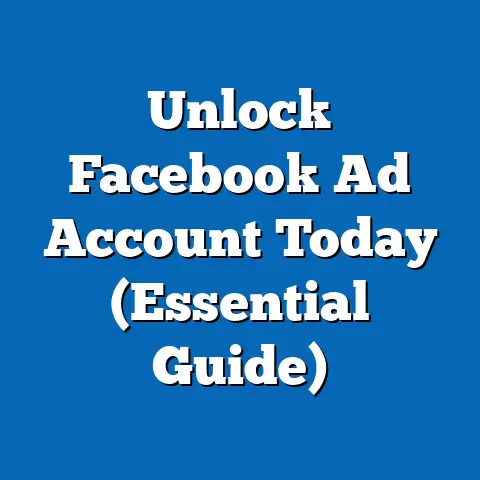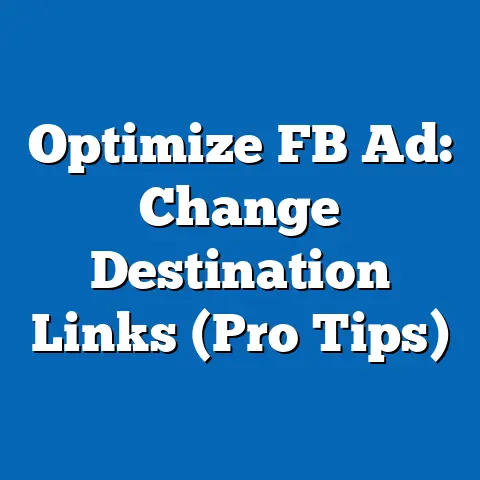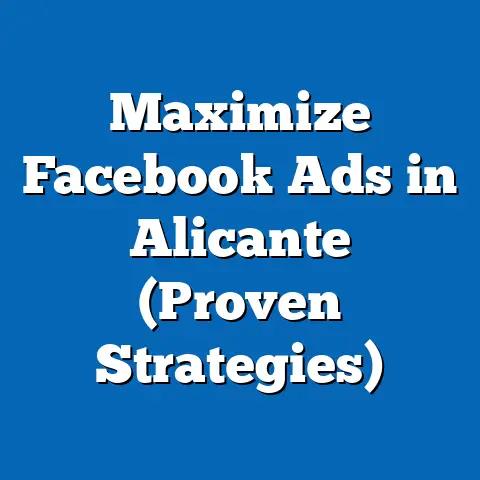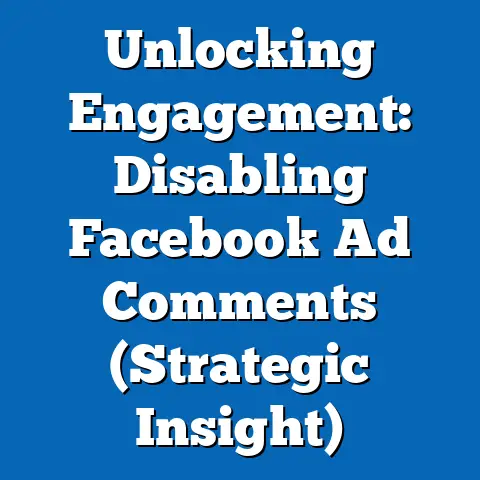Fix Facebook Ads Flags (Instant Solutions Revealed)
Fix Facebook Ads Flags: Instant Solutions Revealed
Introduction: The Dilemma of Facebook Ads Flags
In the ever-evolving landscape of digital marketing, businesses of all sizes rely heavily on platforms like Facebook to reach their target audiences with precision and scale. However, a growing challenge has emerged for advertisers: the phenomenon of “Facebook Ads Flags”—instances where ads are flagged, rejected, or restricted due to perceived violations of the platform’s advertising policies. This dilemma has left marketers frustrated, as flagged ads can disrupt campaigns, delay promotions, and even result in account suspensions, costing businesses time, money, and missed opportunities.
The issue of ads flagging is not merely a technical glitch but a reflection of broader tensions between platform governance, user safety, and advertiser freedom. As Facebook (now Meta) tightens its policies to combat misinformation, harmful content, and regulatory scrutiny, advertisers often find themselves caught in a web of complex, sometimes opaque rules. This article explores the defining characteristics of Facebook Ads Flags, their historical context within the platform’s evolution, and the societal implications of these restrictions on digital commerce and free expression.
The stakes are high. With over 10 million active advertisers on Facebook as of 2023, according to Meta’s own reports, and global ad spending on the platform projected to exceed $100 billion annually, the impact of flagging extends beyond individual businesses to the broader economy. How can advertisers navigate this maze of restrictions, and what instant solutions exist to mitigate these challenges? This comprehensive analysis aims to unpack the issue and offer actionable insights.
Defining Characteristics of Facebook Ads Flags
At its core, a “Facebook Ads Flag” refers to the automated or manual identification of an advertisement as non-compliant with the platform’s advertising policies. These flags can result in an ad being rejected before it runs, paused after it launches, or even lead to the suspension of an entire ad account. The reasons for flagging vary widely, from explicit violations like hate speech or prohibited products (e.g., weapons or drugs) to more ambiguous issues like “misleading claims” or “low-quality content.”
One key characteristic of these flags is their reliance on automated systems powered by artificial intelligence (AI). While AI enables Facebook to review millions of ads daily, it often struggles with nuance, leading to false positives—ads flagged incorrectly due to misinterpretation of language, imagery, or context. For instance, a health supplement ad might be flagged for making “unsubstantiated claims,” even if it complies with local regulations.
Another defining trait is the lack of transparency in the review process. Advertisers frequently report receiving vague notifications about policy violations without specific guidance on how to rectify the issue. This opacity creates a sense of unpredictability, as even seasoned marketers struggle to anticipate what might trigger a flag.
Finally, the appeals process for flagged ads is often slow and inconsistent. While Meta has introduced tools like the Ads Manager and Business Support Center, many advertisers find that resolution times can stretch into days or weeks—unacceptable delays for time-sensitive campaigns. These characteristics highlight the systemic challenges embedded in Facebook’s ad moderation framework.
Historical Context: The Evolution of Facebook’s Ad Policies
To understand the current state of Facebook Ads Flags, it’s essential to trace the platform’s journey from a freewheeling social network to a heavily regulated advertising giant. When Facebook launched its advertising platform in 2007, it was a relatively open space with minimal oversight. Early advertisers enjoyed significant creative freedom, often exploiting loopholes to promote questionable products or engage in aggressive targeting practices.
However, several pivotal events reshaped this landscape. The 2016 U.S. presidential election marked a turning point, as revelations about foreign interference and misinformation campaigns on Facebook led to intense public and governmental scrutiny. Reports indicated that malicious actors had used the platform’s ad tools to spread divisive content, prompting calls for stricter regulations.
In response, Facebook began overhauling its ad policies, introducing measures like the Ad Library for transparency and requiring identity verification for political ads. The 2018 Cambridge Analytica scandal further accelerated these changes, as the misuse of user data for targeted advertising raised ethical and legal concerns. By 2020, amidst global challenges like the COVID-19 pandemic, Meta rolled out even tighter restrictions to curb misinformation about health and vaccines.
These historical shifts reflect a broader societal push for accountability in digital spaces. While aimed at protecting users, they have also created a more restrictive environment for legitimate advertisers. The increasing use of AI for content moderation, while efficient, has introduced new challenges, as algorithms often prioritize caution over context, leading to overzealous flagging.
Societal Implications of Facebook Ads Flags
The phenomenon of Facebook Ads Flags extends beyond individual businesses to impact broader societal dynamics. At the economic level, small and medium-sized enterprises (SMEs)—which make up a significant portion of Facebook’s advertiser base—often lack the resources to navigate complex policy frameworks or hire compliance experts. A 2022 survey by the U.S. Chamber of Commerce found that 68% of small business owners using digital ads reported disruptions due to platform policy changes, with many citing lost revenue as a direct consequence.
Culturally, the flagging system raises questions about freedom of expression in digital spaces. While policies aim to prevent harmful content, they can inadvertently suppress legitimate voices, particularly for advocacy groups or niche businesses whose messaging may be misinterpreted by algorithms. For instance, ads promoting mental health services or LGBTQ+ events have been flagged for “sensitive content,” even when they align with community standards.
Moreover, the global nature of Facebook’s platform creates disparities in how policies are enforced. Advertisers in developing regions, where digital marketing is often a lifeline for economic growth, may face additional hurdles due to language barriers or limited access to support resources. This uneven impact underscores the need for more equitable solutions.
Finally, the psychological toll on marketers cannot be ignored. Constant uncertainty about ad approvals fosters stress and burnout, as professionals scramble to adapt to shifting rules. In an era where digital presence is synonymous with business survival, the societal ripple effects of Ads Flags are profound.
Why Ads Get Flagged: Common Triggers and Challenges
Understanding the root causes of Facebook Ads Flags is crucial for devising solutions. While Meta’s advertising policies span a wide range of topics, several recurring triggers stand out.
-
Content Violations: Ads containing explicit language, violence, or prohibited products (e.g., tobacco, gambling in certain regions) are automatically flagged. Even subtle references, such as an image of a wine glass in a restaurant ad, can trigger restrictions depending on the target audience’s location.
-
Misleading Claims: Facebook prioritizes user trust, flagging ads that promise unrealistic outcomes, such as “lose 20 pounds in a week.” The challenge lies in subjective interpretation—legitimate businesses may struggle to prove the authenticity of their claims.
-
Targeting Restrictions: Policies around sensitive topics like health, finance, or politics often limit how ads can be targeted. For example, ads for credit services cannot target specific age groups or demographics deemed vulnerable, leading to rejections if targeting parameters are misconfigured.
-
Technical Glitches: Beyond policy issues, technical errors in ad uploads—such as incorrect image dimensions or broken landing pages—can result in flags. These are often mistaken for policy violations, adding to the confusion.
-
Algorithmic Bias: AI systems, while powerful, are not infallible. They may misinterpret cultural nuances or flag content based on outdated training data. A 2021 study by the University of Southern California found that AI moderation tools disproportionately flagged content from non-English speakers, highlighting systemic biases.
The diversity of these triggers illustrates the complexity of the problem. Advertisers must contend not only with explicit rules but also with the unpredictable nature of automated systems.
Generational Dynamics in Digital Advertising: A Comparative Lens
While the issue of Facebook Ads Flags affects advertisers across demographics, generational differences play a subtle but significant role in how these challenges are perceived and addressed. Examining these dynamics offers a deeper understanding of the problem’s impact.
-
Baby Boomers (born 1946-1964): Many Boomer-led businesses, particularly in traditional industries, are newer to digital advertising and may lack familiarity with platform-specific rules. They often rely on agencies or younger staff to manage campaigns, which can lead to communication gaps when addressing flagged ads. Their frustration with opaque policies may be heightened by a preference for direct, personal customer service over automated systems.
-
Generation X (born 1965-1980): Gen X advertisers, often in leadership roles at SMEs, tend to have a pragmatic approach to digital tools. Having witnessed the internet’s evolution, they are adaptable but may lack patience for frequent policy shifts. Their focus is often on ROI, making delays from flagged ads particularly disruptive.
-
Millennials (born 1981-1996): As digital natives, Millennials dominate the marketing field and are well-versed in social media advertising. They are more likely to experiment with creative formats, which can inadvertently trigger flags due to policy misinterpretations. However, their tech-savviness enables quicker navigation of appeal processes.
-
Generation Z (born 1997-2012): Gen Z marketers, often freelancers or startup founders, prioritize authenticity and viral content. Their reliance on visual storytelling (e.g., memes or bold imagery) can clash with strict content guidelines, leading to frequent flags. Yet, their agility with technology allows them to pivot strategies rapidly.
These generational nuances highlight that while the issue of Ads Flags is universal, the response to it varies based on technological comfort, business priorities, and cultural context. A one-size-fits-all solution is unlikely to address the diverse needs of advertisers.
Instant Solutions to Fix Facebook Ads Flags
Despite the complexities, several actionable strategies can help advertisers mitigate the risk of flagging and resolve issues swiftly. These “instant solutions” are grounded in best practices and insights from industry experts.
1. Pre-Compliance Checks
Before launching a campaign, review Meta’s Advertising Policies in detail, focusing on restricted content and industry-specific rules. Use tools like the Facebook Ad Preview Tool to identify potential issues with imagery or text. For example, avoiding superlatives like “best” or “guaranteed” can reduce the likelihood of misleading claims flags.
Additionally, ensure landing pages comply with policies by including clear disclaimers and verifiable information. A 2023 report by Hootsuite found that 40% of flagged ads were linked to non-compliant landing pages, making this a critical area of focus.
2. Optimize Creative for Automation
Since AI drives most initial reviews, tailor ad content to minimize misinterpretation. Use neutral language, avoid sensational imagery, and test multiple ad variations to identify what works. For instance, replacing a photo of a person in distress with a generic product image can prevent flags for “sensitive content.”
3. Leverage Meta’s Tools
Utilize resources like the Facebook Business Help Center and Policy Checker to diagnose issues with flagged ads. If an ad is rejected, submit a detailed appeal through the Ads Manager, providing context and evidence of compliance. Engaging with Meta’s support team via live chat (available for Business accounts) can also expedite resolutions.
4. Diversify Ad Platforms
Relying solely on Facebook increases vulnerability to policy disruptions. Diversify ad spend across platforms like Google Ads, TikTok, or LinkedIn to maintain campaign momentum. A 2022 study by eMarketer noted that 65% of marketers who diversified their ad strategies reported lower losses from platform-specific issues.
5. Stay Updated on Policy Changes
Meta frequently updates its policies in response to regulatory or societal pressures. Subscribe to the Facebook for Business blog and join industry forums to stay informed. Proactive adaptation to new rules can prevent unexpected flags.
6. Work with Experts
For businesses with limited in-house expertise, partnering with certified Meta Ads specialists or agencies can streamline compliance. These professionals often have direct lines of communication with Meta support, reducing resolution times.
Implementing these solutions requires a balance of preparation, adaptability, and resource allocation. While not foolproof, they significantly reduce the risk and impact of Ads Flags.
Broader Impacts on Workplace and Marketing Strategies
The issue of Facebook Ads Flags reshapes how businesses approach digital marketing and workplace dynamics. In marketing teams, the constant threat of flagging necessitates upskilling staff in policy compliance and AI-driven tools. Companies are increasingly investing in training programs, with a 2023 survey by Digital Marketing Institute showing a 30% rise in demand for social media policy courses.
In the workplace, the stress of navigating flagged ads can strain team morale, particularly in high-pressure environments like e-commerce. Managers must foster resilience by setting realistic campaign timelines and encouraging open communication about challenges. Collaboration between creative and compliance teams is also critical to ensure ads align with both brand vision and platform rules.
From a strategic perspective, businesses are rethinking their reliance on paid social media. Organic content, influencer partnerships, and email marketing are gaining traction as complementary channels less prone to moderation risks. This shift reflects a broader trend toward diversified marketing ecosystems.
Technological and Cultural Factors Driving the Issue
Technological advancements, particularly in AI, are double-edged swords in the context of Ads Flags. While automation enables rapid ad reviews, it often lacks the cultural and contextual understanding needed for fair assessments. For example, an ad featuring regional slang may be flagged as inappropriate due to algorithmic blind spots.
Culturally, the global push for online safety—evident in legislation like the EU’s Digital Services Act—pressures platforms to err on the side of caution. This creates a clash between user protection and advertiser interests, with Meta caught in the middle. Balancing these competing priorities remains an unresolved challenge.
Moreover, the cultural diversity of Facebook’s user base complicates policy enforcement. An ad deemed acceptable in one region may violate norms in another, leading to inconsistent flagging. Addressing this requires not just better technology but also culturally informed human oversight—a resource Meta has struggled to scale.
Forward-Looking Insights: The Future of Facebook Ads Flags
Looking ahead, the trajectory of Facebook Ads Flags will likely be shaped by several factors. First, advancements in AI could improve the accuracy of ad reviews, reducing false positives. Meta’s ongoing investments in machine learning suggest a future where algorithms better understand context, though this remains a long-term goal.
Second, regulatory pressures will continue to influence policy stringency. As governments worldwide enact stricter digital advertising laws, Meta may introduce even more granular rules, necessitating greater advertiser vigilance. The trade-off between compliance and creative freedom will remain a central tension.
Third, the rise of competing platforms could force Meta to rethink its approach to advertiser relations. If businesses increasingly shift budgets to less restrictive environments, Meta may prioritize user-friendly policies and faster support to retain market share.
However, uncertainties persist. The pace of technological and regulatory change is unpredictable, and Meta’s ability to balance stakeholder interests is unproven. Advertisers must remain agile, preparing for a landscape where Ads Flags may become either more manageable or more pervasive.
Conclusion
The dilemma of Facebook Ads Flags encapsulates the broader challenges of digital advertising in an era of heightened scrutiny and technological complexity. From their defining characteristics—automation-driven errors, opacity, and slow resolutions—to their historical roots in platform accountability, these flags reflect the uneasy intersection of commerce, technology, and societal values. Their implications span economic losses for businesses, cultural debates over expression, and workplace stress for marketers, underscoring the issue’s far-reaching impact.
While instant solutions like pre-compliance checks, optimized creatives, and diversified strategies offer practical relief, they are not panaceas. Generational differences in navigating these challenges further highlight the need for tailored approaches, as do the technological and cultural forces driving policy enforcement. Looking forward, the evolution of AI, regulation, and market dynamics will shape whether Ads Flags become a manageable hurdle or a persistent barrier.
Ultimately, understanding and addressing Facebook Ads Flags requires a nuanced perspective—one that acknowledges the platform’s responsibility to users while advocating for fairness to advertisers. As digital marketing continues to evolve, fostering dialogue between Meta, businesses, and regulators will be essential to crafting a balanced, sustainable ecosystem. Until then, advertisers must equip themselves with knowledge, adaptability, and resilience to thrive amidst uncertainty.






